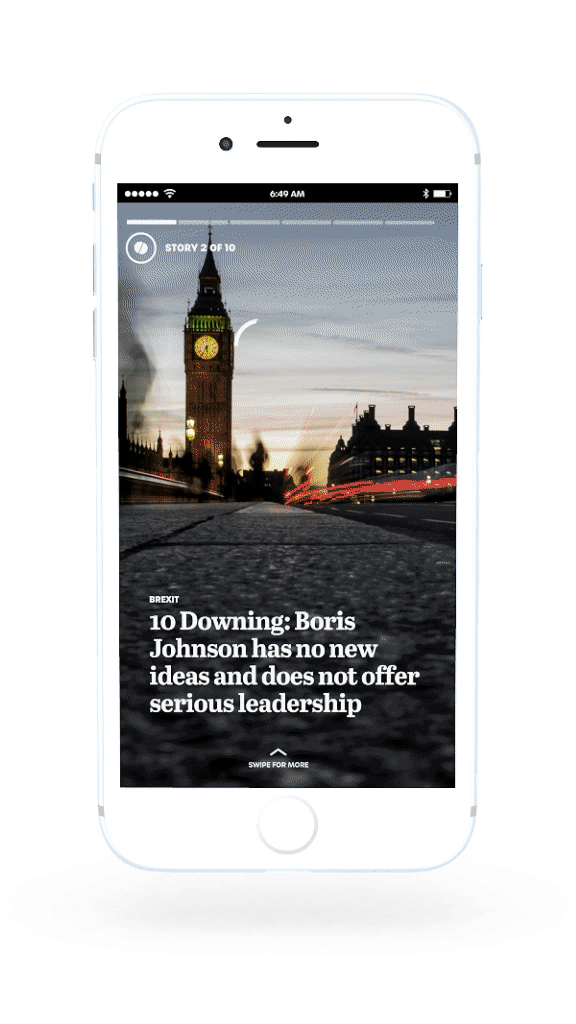
Mihai Fanache, CEO, Newsroom AI
Digital publishers have seen the future, and it is video. Mark Zuckerberg said so. That sounds remarkably overblown, as consumers are firmly saying no to video. While publishers have presented the “Pivot to Video” movement as a response to young people’s changing media consumption habits, survey data reveals that news readers of all ages overwhelmingly prefer text over video.
The 2018 Reuters Institute study shows for the second year in a row that more than two-thirds of those queried prefer news as text, with just 14 percent using text and video equally: “In an average week, fewer than a third of the survey respondents watched online news videos.”

Publishers have placed video at the center of their revenue model, a format that few other than Facebook and advertisers have called for. The trend is a reflection of the monetization crisis in the news industry —an industry in which the consumer is now admittedly wrong about their own preferences, as long as content stays free.
However, engagement for text content doesn’t look much better either. According to research from Google, the overwhelming majority of long-form articles on mobile are abandoned in fewer than 90 seconds.
When it comes to video, consumers rejecting the format cite the perceived loss of control over the content, the bumpy access to sound when on the move as well as the limited data traffic available on their smartphones.
Empirically, text, on the other hand, seems to be missing out on all that’s fundamentally unique about the mobile era: bigger screens, better cameras, more content sources therefore much shorter attention spans.
So how do you make news content more rewarding outside the print and broadcast legacy formats? The answer might be a whole new form of journalism: “experiential storytelling.”
The New York Times is one of the first publishers venturing into experiential content. Their 2012 “Snowfall” article claimed a Pulitzer Prize for feature writing and is still seen as the future of online journalism six years later.
Snapchat however made experiential content easier to create, read through and distribute. Their Story format has since been ungraciously borrowed by Instagram and turned into a company-wide success across multiple products. Instagram reported more than 400 million daily Story users earlier this year, which makes them the leading platform using the format.
However, that’s just round one. The vertical, mobile-first format is set to become a standard for publishers’ news feeds, and that’s a newsworthy round two. We’ve analyzed five things that make the Story format a compelling theme for the years to come.
1. The performance
Our team has looked at the data we collected from 45 stories published almost identically on-site, in an HTML format and on Instagram, over a three week period.
Using a standard length of 10 slides , it turned out that site users progressed further into the same content, with a 72 percent greater completion rate than those on Instagram. Stories with a “See More” call to action to the long read saw almost 200 percent greater swipe-up rates on-site when compared to Instagram.
With Snap and Instagram having done the heavy lifting on the Stories front, users will know a Story when they see one in your newsfeed.
2. The daily habits
The condensed nature of Stories allows users to regulate their information intake, with more enjoyable and less fatty snack breaks. A twice daily briefing for example can get users up to speed on five must-reads of the moment, eliminating some of the drifting and distractions of the web. It’s like navigating the news with a GPS rather than a compass.

3. The narrative structure
We’re now 600-something words into this article, which means there’s only a 40 percent chance you’re still reading. The other 60 percent have left for any number of reasons. They got bored, confused, distracted and hey, there’s always so much else to go looking for on Digiday.
But here’s the good part. Sequential storytelling employed by tappable content uses the editorial equivalent of the act structure in movie making. These dramatic practices such as compressing or decompressing time or alternating text length help build momentum and release just the right amount of information to keep users engaged through the entire narrative.
4. The feedback loop
Interactive elements such as quizzes or polls can create temporary diversions into the story to help explain complex issues, introduce new evidence and perhaps overrun prejudice or fake news.
In a story about the public health system in the UK for example you might want to know where readers stand on Brexit just a few scenes into the story. Such polarizing topics are likely to get your content scrutinized by the audience before you even make your case.

Dynamic timelines can drive a more inclusive content strategy where no previous knowledge is assumed and additional context is revealed based readers’ input.
5. The commercial model
You’re now among the 20 percent of people that have gotten this far down this story. So let’s talk trash. Banner ads suck. Pre-roll ads are an insult to common sense. Moreover, all the excess inventories created over time have only put more pressure on pricing when most is traded programmatically.
Building more of the same supply will only keep publishers playing defense as none can match the scale or data footprint of Google or Facebook.
Stories create the once-in-a-decade opportunity for publishers to rewrite their commercial game plan with an exclusive focus on brand advertising. With a format that’s no longer contained in a rectangle, publishers can build full-screen experiences that double as billboards and destination pages.
The bottom line
Experiential content anticipates a massive transformation for journalism towards the visual, mobile-first era of storytelling. It will create the newsroom of the future and redefine audience engagement. And it will work out handsomely for those that get it right and early.
More from Digiday

Omnicom confirms the pending exit of influential Annalect chief Slavi Samardzija
The CEO and architect of Omni departs, hinting at pending changes as Omnicon continues $13.5 billion IPG takeover bid.

Zero-click search is changing how small brands show up online — and spend
To appease the AI powers that be, brands are prioritizing things like blogs, brand content and landing pages.

From sidelines to spotlight: Esports events are putting creators center stage
Esports events’ embrace of content creators reflects advertisers’ changing priorities across both gaming and the wider culture. In the past, marketers viewed esports as one of the best ways to reach gamers. In 2025, brands are instead prioritizing creators in their outreach to audiences across demographics and interest areas, including gaming.





